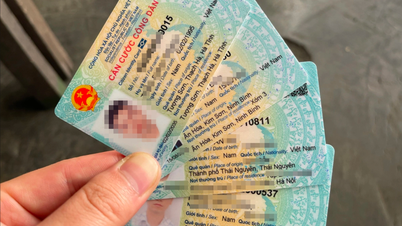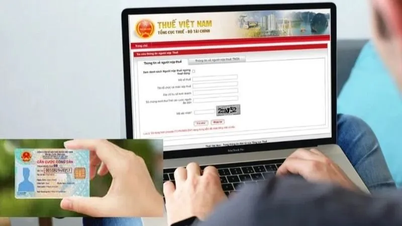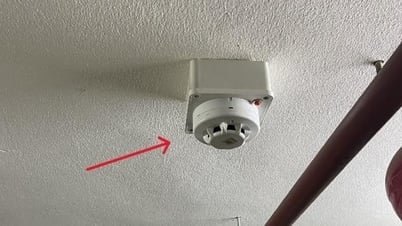
According to Decree 117, e-commerce platforms and digital platforms must deduct and pay value-added tax (VAT) and personal income tax for sellers (households and individuals doing business) on the platform from July 1. Sellers will include individuals residing in the country and abroad.
The above taxes will be deducted as soon as the order is successfully confirmed and the buyer accepts the payment. The tax amount is determined as a percentage of the revenue of each completed transaction.
For example, VAT on goods is 1%, services is 5%, transportation and services associated with goods is 3%. Personal income tax on individuals residing in the country is 0.5% for goods, 2% for services, 1.5% for transportation and services associated with goods. Individuals living abroad are subject to personal income tax when selling goods online at 1%, services are 5%, transportation and services associated with goods are 2%.
Specifically on the calculation method, the representative of the Tax Department cited Circular 40/2021 stating that the tax rate will be calculated as a percentage of the total revenue generated during the period. That is, the revenue for calculating value-added tax and personal income tax includes all sales proceeds from goods, services and other revenues. Amounts such as transaction fees, transportation, discounts, subsidies, etc. are all business expenses and cannot be deducted from taxable revenue.
For example, a seller sells through the Shopee platform. At the end of the month, the platform reports the seller's revenue, showing that the total product value is 259 million VND. After deducting discounts, subsidies, shipping and transaction fees, the actual total amount received is 196 million VND. Thus, this seller will have to pay 1.5% tax on the total revenue of 259 million VND, not on the actual amount received of 196 million VND.
In case the seller has had the floor deduct and pay tax on their behalf but their annual revenue is 100 million VND or less (from January 1, 2026, it will be 200 million VND), the tax refund procedure will be carried out for the excess amount paid.
For online sales revenue not through platforms, sellers need to declare and pay taxes through the Electronic Information Portal for households and individuals doing e-commerce business.
In addition to VAT and personal income tax, households and individuals doing business on online sales platforms must declare and pay annual business license tax, special consumption tax, environmental protection tax, natural resources tax and other taxes. They are also responsible for providing complete and accurate information about tax codes or personal identification numbers and passports to the platforms.
Issuing invoices to households and individuals doing business is carried out according to the provisions of Decree 70 and Circular 32. Specifically, according to the guidance of the tax authority, in case an individual does business on the platform and has business activities selling goods and providing services directly to consumers, he/she will be subject to using electronic invoices generated from cash registers according to Decree 70. If he/she does not sell directly to consumers, he/she will be subject to using electronic invoices with tax authority codes.
In case an individual or business household authorizes the floor to issue invoices, the floor is responsible for issuing invoices on their behalf.
Individuals and business households selling goods issue invoices to customers but do not have to declare and pay taxes on the revenue and deducted and paid taxes on the platform. In case individuals and business households on the platform authorize, the e-commerce platform is responsible for issuing invoices on their behalf.
According to Ms. Nguyen Quynh Duong, General Director of Nhanh.vn multi-channel sales management software, the time to issue an invoice is when the ownership or use of the goods is transferred to the buyer, regardless of whether the payment has been received or not. Thus, with online orders, the most suitable time to issue an invoice is when the shipper delivers the goods to the buyer - which can be based on the order status updated by the shipping company or the platform.
Normally, sellers on online retail platforms will often encounter cases where customers return or cancel goods. In this case, issuing invoices will have two possibilities.
In the first case, when the shipper delivers the goods, the customer checks the goods, but refuses to receive them and returns them to the shipper. At that time, the order status displayed on the shipping company's system or e-commerce platform is "Refunded". Thus, the seller does not need to issue an invoice in this case.
In the second case, the buyer returns the goods after receiving them from the shipper. Thus, the above order status has been recorded as "Successful" by the shipping company or e-commerce platform. The seller needs to create a return slip to record the buyer's return.
At that time, the multi-unit invoice software will create a reduction adjustment invoice corresponding to the return slip. This reduction adjustment invoice will clearly state which original invoice is adjusted, which items are returned, and what the unit price and quantity are so that the shop can deduct the correct revenue.
In addition, according to Ms. Duong, electronic invoices generated from cash registers are not required to record buyer information. Therefore, sellers on the platform only need to record information when requested by the buyer.
E-commerce platforms often hide buyer information, making it difficult for sellers to distinguish and explain. Therefore, to easily manage invoices, Ms. Duong instructed sellers to set the buyer's name on the invoice in the form: Buyer on the platform + Order ID (order number) on the platform to easily explain to tax authorities later.
According to data from the Tax Department ( Ministry of Finance ), in the first 5 months of the year, organizations and individuals doing business on online platforms and digital platforms paid 74,400 billion VND in taxes, an increase of 55% over the same period last year.
Deputy Director of the Tax Department Dang Ngoc Minh said that Decree 117 helps ensure that households and individuals doing business on digital platforms fully fulfill their tax obligations like other business entities. The regulations also aim to increase the responsibility of intermediary organizations and platform operators in coordinating tax management and reducing administrative procedures for taxpayers. Thereby, the business environment will be healthy, fair, and prevent tax evasion in the field of e-commerce.
Mr. Minh suggested that the heads of the regional Tax Departments increase propaganda and support for organizations operating platforms, households and individuals doing business to properly fulfill their tax obligations. Along with that, the tax sector will continue to carry out digital transformation and apply information technology to build a modern, transparent and sustainable national financial system.
TB (according to VnExpress)Source: https://baohaiduong.vn/ban-hang-tren-san-online-nop-thue-the-nao-tu-ngay-1-7-414637.html


































































![[Maritime News] Wan Hai Lines invests $150 million to buy 48,000 containers](https://vphoto.vietnam.vn/thumb/402x226/vietnam/resource/IMAGE/2025/6/20/c945a62aff624b4bb5c25e67e9bcc1cb)










![[Infographic] Party Committee of the Ministry of Culture, Sports and Tourism: Marks of the 2020 - 2025 term](https://vphoto.vietnam.vn/thumb/402x226/vietnam/resource/IMAGE/2025/6/22/058c9f95a9a54fcab13153cddc34435e)























Comment (0)